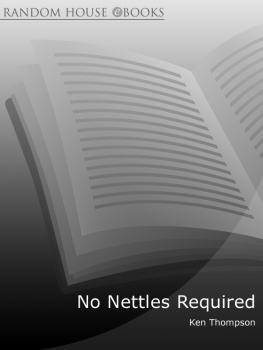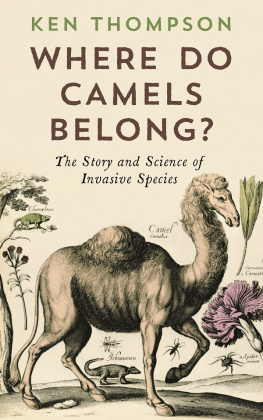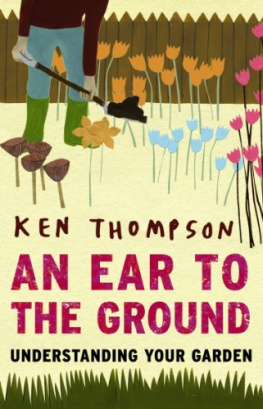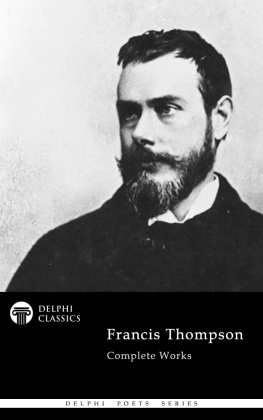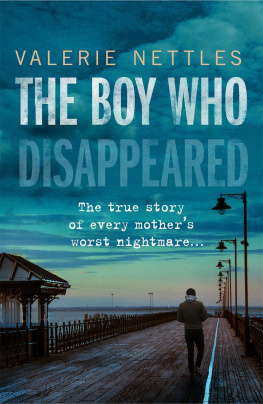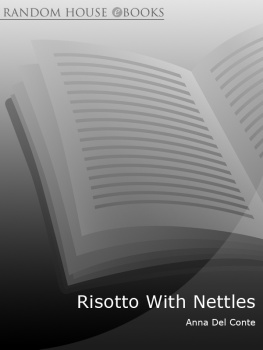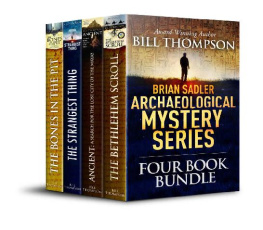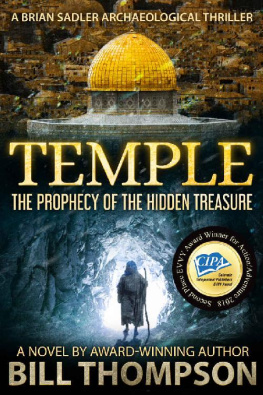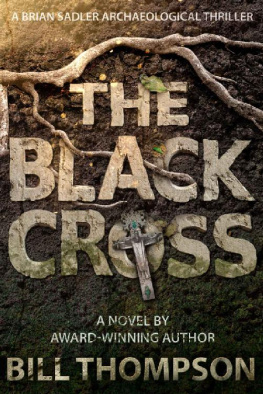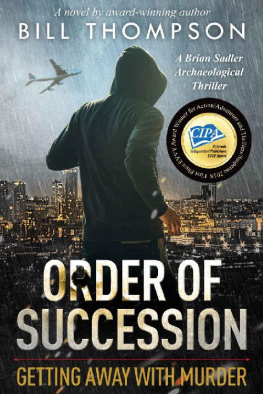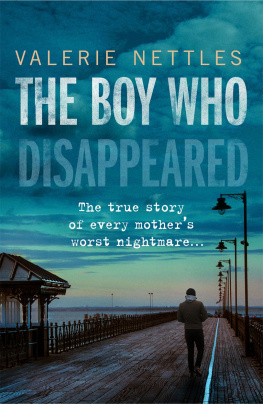Ken Thompson - No Nettles Required
Here you can read online Ken Thompson - No Nettles Required full text of the book (entire story) in english for free. Download pdf and epub, get meaning, cover and reviews about this ebook. publisher: Vintage, genre: Religion. Description of the work, (preface) as well as reviews are available. Best literature library LitArk.com created for fans of good reading and offers a wide selection of genres:
Romance novel
Science fiction
Adventure
Detective
Science
History
Home and family
Prose
Art
Politics
Computer
Non-fiction
Religion
Business
Children
Humor
Choose a favorite category and find really read worthwhile books. Enjoy immersion in the world of imagination, feel the emotions of the characters or learn something new for yourself, make an fascinating discovery.
- Book:No Nettles Required
- Author:
- Publisher:Vintage
- Genre:
- Rating:5 / 5
- Favourites:Add to favourites
- Your mark:
- 100
- 1
- 2
- 3
- 4
- 5
No Nettles Required: summary, description and annotation
We offer to read an annotation, description, summary or preface (depends on what the author of the book "No Nettles Required" wrote himself). If you haven't found the necessary information about the book — write in the comments, we will try to find it.
No Nettles Required — read online for free the complete book (whole text) full work
Below is the text of the book, divided by pages. System saving the place of the last page read, allows you to conveniently read the book "No Nettles Required" online for free, without having to search again every time where you left off. Put a bookmark, and you can go to the page where you finished reading at any time.
Font size:
Interval:
Bookmark:
Ken Thompson is a plant ecologist. He is Senior Lecturer in the Department of Animal and Plant Sciences at the University of Sheffield, where he was a key member of the first of two Biodiversity of Urban Gardens (BUGS) projects investigating the significance of urban gardens as habitats for natural biodiversity.
Ken Thompson has written over one hundred articles for scientific journals and writes a regular column on the science of gardening for Organic Gardening magazine. He is also the author of the critically acclaimed An Ear to the Ground: Garden Science for Ordinary Mortals.

Mary Claire Smith has illustrated a number of childrens picture and poetry books and has also created book covers and editoral illustrations for magazines. For the last eight years she has been working on an internationally known range of stationery products. She also illustrated Ken Thompsons previous book, An Ear to the Ground. Mary Claire lives by the sea with her two hens, Sybil and Shirley, and has a large collection of buttons and egg-cups.
How well do you know your garden wildlife? Armed with the latest research, Ken Thompson punctures the myths that abound about wildlife gardening, and dispenses invaluable science-based advice, demonstrating with clarity and wit just how easy, cheap and rewarding it can be.

Some brief thanks are necessary. First Kevin Gaston, Phil Warren, Richard Smith and Alison Loram, without whom much of the first half of this book could not have been written. If any of my facts turn out to be correct, they can take much of the credit. If any of my opinions turn out to be wrong, thats my fault. Second, everyone else involved in the Sheffield BUGS project, not least the scores of garden owners who kindly allowed us the use of their gardens. Third, the Natural Environment Research Council for generously funding the BUGS project. Fourth, Jennifer Owen for continuing inspiration. Fifth, everyone at Transworld for their customary friendliness, enthusiasm and efficiency. Finally thanks to Pat, Lewis and Rowan for their continuing support and encouragement during my transition from unknown academic to unknown academic with a small sideline in gardening books.

Popular publications
Thompson, K. (2004), Bugs in the Borders, The Garden, 129, 3469.
Gaston, K. J., Smith, R. M., Thompson, K. and Warren, P. H. (2004), Gardens and Wildlife the BUGS Project, British Wildlife, 16, 110.
Scientific publications
Thompson, K., Austin, K. C., Smith, R. M., Warren, P. H., Angold, P. G. and Gaston, K. J. (2003), Urban Domestic Gardens I: Putting Small-scale Plant Diversity in Context, Journal of Vegetation Science 14, 718.
Gaston, K. J., Smith, R. M., Thompson, K. and Warren, P. H. (2005), Urban Domestic Gardens II: Experimental Tests of Methods for Increasing Biodiversity, Biodiversity and Conservation 14, 395413.
Thompson, K., Hodgson, J. G., Smith, R. M., Warren, P. H. and Gaston, K. J. (2004), Urban Domestic Gardens III: Composition and Diversity of Lawn Floras, Journal of Vegetation Science 15, 3738.
Gaston, K. J., Warren, P. H., Thompson, K. and Smith, R. M., Urban Domestic Gardens IV: The Extent of the Resource and its Associated Features, Biodiversity and Conservation (in press).
Smith, R. M., Gaston, K. J., Warren, P. H., and Thompson, K., Urban Domestic Gardens V: Relationships Between Housing, Landscape and Habitat Composition, Landscape Ecology 20, 23553.
Smith, R. M., Warren, P. H., Thompson, K. and Gaston, K. J., Urban Domestic Gardens VI: Environmental Correlates of Invertebrate Species Richness, Biodiversity and Conservation (in press).
Thompson, K., Colsell, S., Carpenter, J., Smith, R. M., Warren, P. H. and Gaston, K. J. (2005), Urban Domestic Gardens VII: A Preliminary Survey of Soil Seed Banks, Seed Science Research 15, 13341.
Smith, R. M., Gaston, K. J., Warren, P. H. and Thompson, K., Urban Domestic Gardens VIII: Environmental Correlates of Invertebrate Abundance, Biodiversity and Conservation (in press).
Smith, R. M., Thompson, K., Hodgson, J. G., Warren, P. H. and Gaston, K. J. Urban Domestic Gardens IX: Exploring the Composition and Richness of the Vascular Plant Flora, Biological Conservation (in press).

IN 2003 THE ROYAL HORTICULTURAL SOCIETY (RHS) commissioned MORI to explore gardeners attitudes to wildlife. The results revealed an extraordinary level of interest in wildlife gardening: 70 per cent of respondents thought that people should consider wildlife when maintaining their garden, and a third of the gardeners watched wildlife in their gardens. On the other hand, there was clearly a problem when it came to translating this concern into action. Only half the gardeners believed that they were currently doing all they could to encourage wildlife, and 38 per cent said they would do more if they knew how. Between a quarter and a half of gardeners provided food, nest boxes or water, but only 16 per cent deliberately used plants to attract wildlife.
These findings largely back up an earlier survey by Scottish Natural Heritage (SNH), the governments wildlife agency in Scotland, which went into more detail about gardeners attitudes to wildlife gardening itself. SNH asked gardeners how they would go about attracting wildlife into their gardens, a question that revealed an interesting consensus: wildlife gardening really only works in big gardens and isnt relevant to town gardens; wildlife gardens are hard work and look untidy; and plants for wildlife have to be native wild flowers rather than garden cultivars in short, a major obstacle to encouraging wildlife is that its unattractive, expensive and hard work. For those of you who want to get back out into the garden and not waste any more time reading, I can tell you now that there is scarcely a grain of truth in any of these beliefs. In fact the rest of this book will explain that gardens (all gardens) are good for wildlife, and that encouraging wildlife is entirely compatible with ordinary gardening, costs next to nothing and is almost completely effortless. You may have wished that all these things were true, but never allowed yourself to hope that they actually are. Well, they are, and later Ill show you the proof.
However, before we go any further, we really have to agree on a fundamental question, which is what is garden wildlife? And when I say agree I mean that Im going to tell you what I think, and you are either going to agree with me, or else read a different book. Recently the BBC has devoted many hours of live programming, on more than one occasion, to garden wildlife, almost all of it starring foxes, badgers, hedgehogs and a few birds. How representative is this of the wildlife that actually lives in the average garden? The answer is not at all. In fact this view of garden wildlife is as biased as a week of holiday programmes devoted exclusively to ballooning in the Andes and trekking to the South Pole. The reason is simply that both numbers and diversity of large, furry or feathered creatures in the typical British garden are extremely low. The average urban gardener is likely to encounter just five or six mammals, maybe seven if they can tell the difference between house mice and wood mice. You will see more birds than this, but not many. If youre lucky, and if you watch long and carefully enough, and if you include the birds that you see flying over your garden, you might eventually see around forty different bird species.
Font size:
Interval:
Bookmark:
Similar books «No Nettles Required»
Look at similar books to No Nettles Required. We have selected literature similar in name and meaning in the hope of providing readers with more options to find new, interesting, not yet read works.
Discussion, reviews of the book No Nettles Required and just readers' own opinions. Leave your comments, write what you think about the work, its meaning or the main characters. Specify what exactly you liked and what you didn't like, and why you think so.

